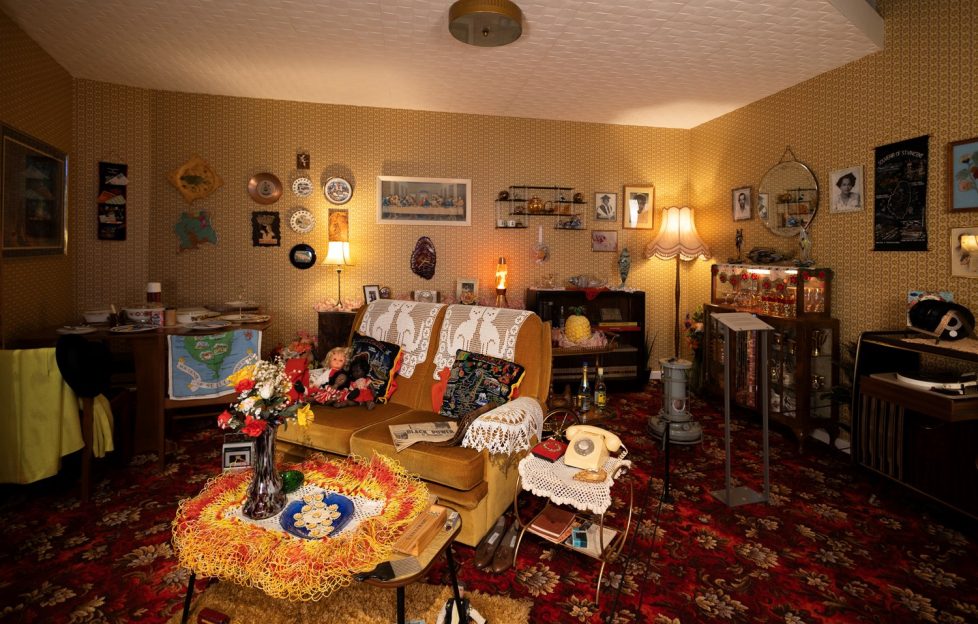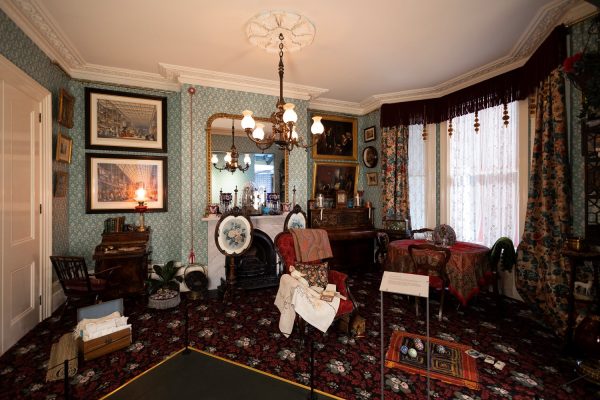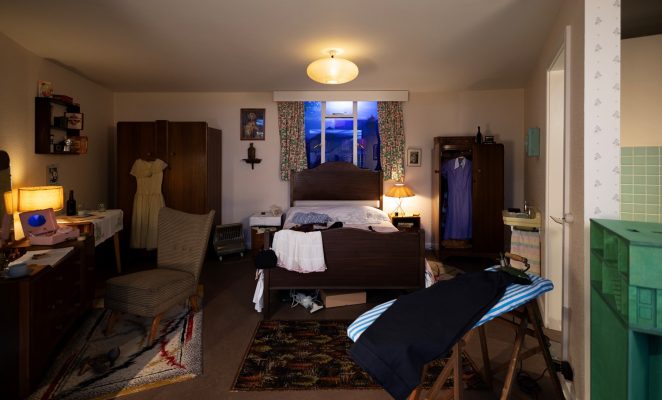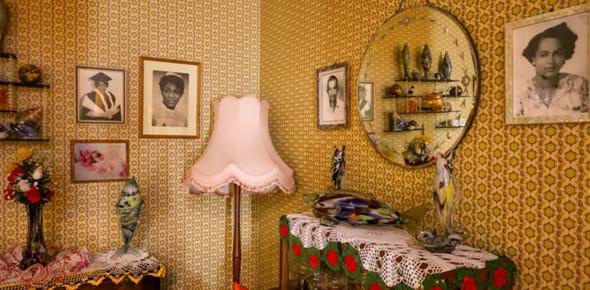
The Museum of Home’s latest exhibition, Rooms Through Time, takes you for a walk down memory lane and then invites you in for tea.
A series of rooms have been designed to replicate the living conditions in East London past, present and future – from 1630 right through to 2049.
Visitors get to explore the homes of people from all walks of life and the museum has taken great care to ensure it’s an authentic experience.
You will easily step into the shoes of those living in each space with the help of some personal real-life stories and objects to set the scene.
Through accurate time pieces, textiles and furnishing, the Museum of Home encourages visitors to consider what home means to them, while exploring what it looks like for others across four centuries of home life.

A typical terraced house built to accommodate London’s fast-growing middle classes. Image: Museum of the Home.
A Townhouse in 1878 is home to a middle class family and their servants. In the affluent area of Chelsea, high ceilings and large bay windows flood the rooms with light, while the occasional ‘out of place’ object tells the lesser known stories of the travelling Ayahs. These women from India were employed to act as nannies for the children as the family travelled. They cared for the children and made sure they were entertained on long voyages with stories and games.

The Second World War bombing decimated London, so new housing had to be built quickly and cheaply. Image: Museum of Home.
A Room Upstairs in 1956 belongs newlyweds Kathleen and Jack who are getting ready for a big night out at the Galtymore dancehall. Kathleen is an Irish immigrant and personal stories from real-life Irish immigrants of the time help to drive the narrative of this room. The lasting impact of the Second World War are also explored here. After the bombings destroyed London’s housing stock, terraced housing was designed quickly and built cheap to provide homes for people.

Housing developments in the 70s and 80s encouraged community, which indirectly produced multicultural hubs and political movements. Image: Museum of Home.
A Terraced House in 1978 was part of a long-running initiative to build nearly 6.5million council homes by the late 1970s. Within the De Beauvoir Estate in Hackney, home became high-rise and mid-rise as well as remaining terraced like this home. Community was encouraged by centring housing around small shops and other shared spaces, and the overall aim was to reduce vehicle traffic so that streets were safer for children to play. During the 1970s and 1980s radical change was being driven by young black people. The children of the Windrush generation began to form important cultural and political movements within the estate where sharing music, such as reggae, played a pivotal role in amplifying their voices.
Other rooms include, a Hall in 1630, a Parlour in 1745, a Drawing Room in 1830, a High-rise Flat in 2005 and a Converted Flat in 2049.
Each room is regularly restyled throughout the year, most notably during the colder months for The Museum of Home’s annual Winter Festival. This festival provides visitors the opportunity to learn more about the winter traditions of each time period and how such changes a home.




